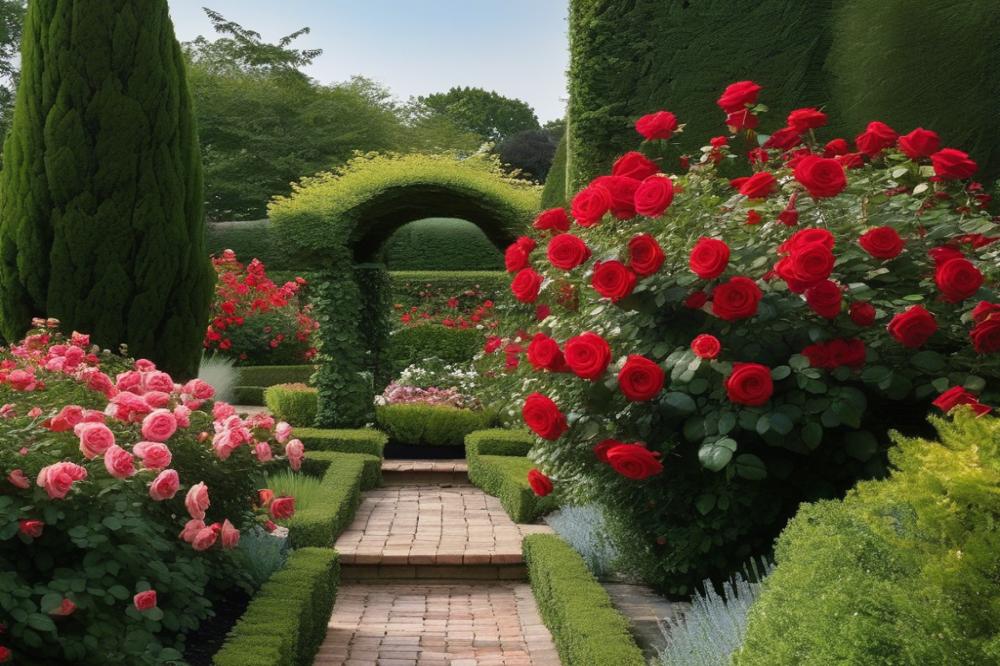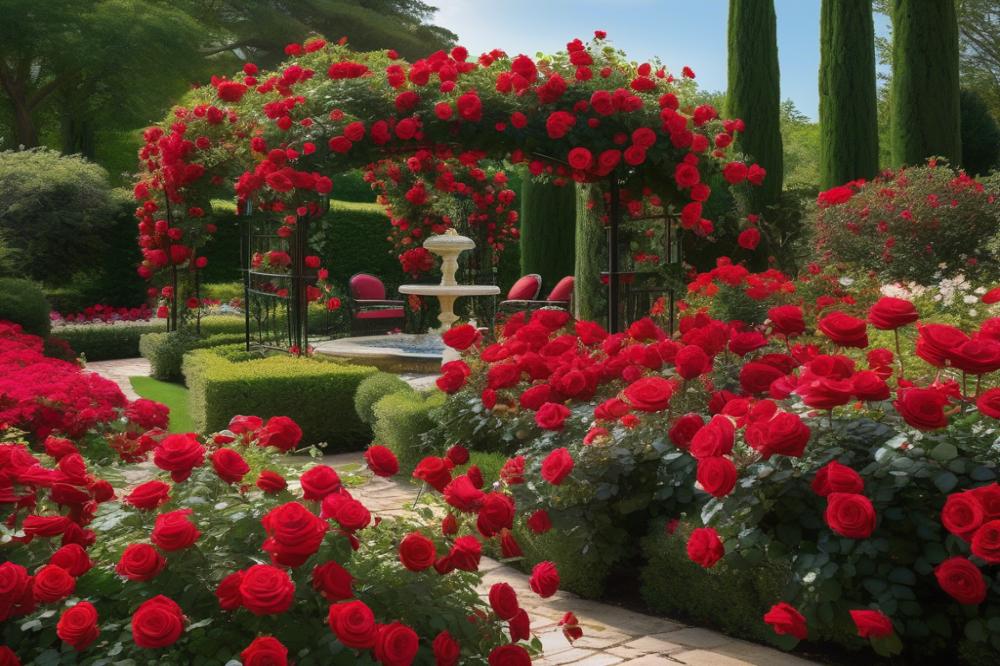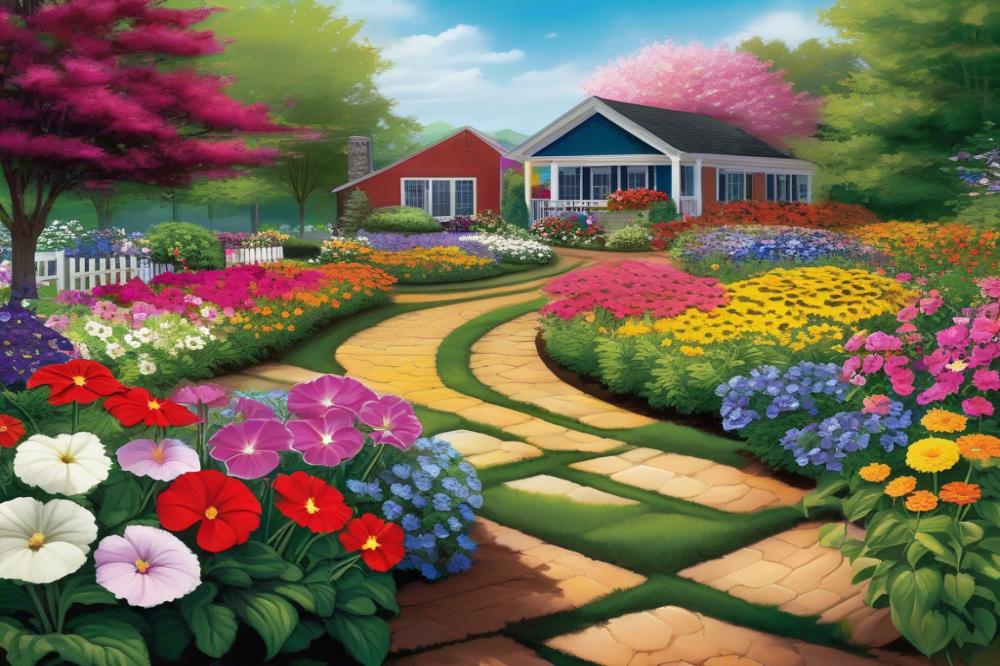Introduction
Red roses have long held a special place in classic gardens. Their vibrant hues and luxurious appearance make them a favorite among gardeners and flower enthusiasts alike. The sight of red roses blooming against lush greenery can bring joy and nostalgia to any outdoor space. When thoughtfully included in a landscape, these flowers create an enchanting atmosphere that many strive to capture.
Choosing appropriate varieties plays a crucial role in cultivating a successful garden. Different types of red roses offer varying scents, sizes, and bloom times, which can greatly influence the overall look and feel of your garden. Certain cultivars may thrive better in specific climates or soil types, making selection vital for achieving a stunning display. Additionally, understanding the needs of each variety will help gardeners maintain their roses, ensuring they remain healthy and vibrant throughout the growing season.
As you explore the diverse options available, remember that not all red roses are created equal. Some may boast large, velvety petals, while others may feature smaller blooms or more subtle fragrances. Taking the time to research and gather information can lead to delightful surprises in your garden. Implementing quality practices and choosing the right types will aid in producing a garden that truly shines.
In this article, we will delve into some of the top red rose varieties that are perfect for a classic garden. Whether you are an experienced gardener or just starting out, there is something here for everyone. Let’s discover the beauty and versatility of these remarkable flowers, helping you transform your garden into a beloved sanctuary. For further information on gardening tips, visit #anchor_text_1#. If you seek inspiration, check out #anchor_text_2# for stunning examples.
The Allure of Red Roses

Red roses have been part of gardens for centuries. Their historical significance stretches back to ancient civilizations. The Greeks and Romans cherished these blooms for their beauty. In medieval times, they often appeared in royal gardens. Many legends associate red roses with love and passion. Iconic stories, such as those from Shakespeare, highlight their enchanting role in romantic themes.
Symbolism plays a crucial role when discussing red roses. Traditionally, they signify love and devotion. Couples often choose red roses for special occasions, such as weddings. This flower represents deep emotions. It conveys sentiments that words sometimes fail to express. A single bloom may speak volumes about affection. Consequently, their iconic status remains strong across cultures.
Designing a landscape with red roses adds charm and elegance. These blooms harmonize beautifully with other plants. Their vibrant color attracts attention and creates focal points in gardens. Many gardeners utilize them to enhance pathways and borders. Placing them near soft foliage creates stunning contrasts. This strategy not only highlights the roses but also balances the overall design. The allure of a garden featuring red roses is undeniable.
Red roses contribute to a romantic atmosphere in any setting. Their presence can evoke nostalgia, making spaces feel inviting. Additionally, they have practical uses. Many landscape designers incorporate red roses to improve visual interest throughout different seasons. Choosing varying shades and types ensures a rich red display. This thoughtful selection enhances the overall beauty of the garden.
Popular Red Rose Varieties

Many gardeners appreciate red roses for their beauty and symbolism. This section will explore the most popular types, including their characteristics and growing needs.
Classic Hybrid Teas
Hybrid Teas are a classic choice among rose lovers. These roses typically feature long stems, making them ideal for cutting. Flowers bloom one at a time, displaying large, high-centered blooms. Common varieties include ‘Mr. Lincoln’ and ‘Double Delight.’ Both options provide rich colors and delightful fragrances. They prefer full sunlight and well-drained soil, with regular watering for optimal growth.
Climbing Roses
Climbing roses add vertical interest to gardens. Their long canes can meander over fences, trellises, or arbors. Popular selections include ‘Don Juan’ and ‘Climbing America.’ These vines produce clusters of blooms, often showcasing vibrant red petals. Climbing roses thrive in sunny spots. They also need sturdy support and good air circulation to stay healthy.
Floribunda Roses
Floribunda roses are loved for their abundance of flowers. They produce blooms in clusters, resulting in a colorful display throughout the growing season. Varieties like ‘Iceberg’ and ‘Julia Child’ stand out for their hardiness and vibrant colors. These bushes require ample sunlight and moderate watering. Their compact growth habit makes them perfect for borders or garden beds.
Grandiflora Roses
Grandiflora roses combine features from hybrid teas and floribundas. These plants grow tall and produce large, fragrant blooms in abundant clusters. Varieties such as ‘Queen Elizabeth’ are particularly well-known. They add elegance and beauty to any garden setting. Like other roses, they enjoy full sun and well-draining soil. Regular maintenance, including pruning, helps maintain their shape and health.
Cultivating Red Roses in the Garden

Best Planting Practices for Red Roses
Planting red roses requires careful timing and location. Choose a spot with good air circulation and space to grow. Dig a hole that is twice as wide as the root ball but no deeper than the root itself. This allows roots to spread out well. When placing the rose in the ground, the graft union should sit just above soil level. Water the rose deeply after planting to help it settle in.
Soil Preparation and Nutrition Needs
Creating healthy soil is essential for rose care. Start with a testing kit to check pH levels; red roses thrive in slightly acidic to neutral soil, typically around 6.0 to 7.0. Amend the soil with organic matter, such as compost or well-rotted manure, to improve drainage and nutrients. Adding balanced fertilization helps as well; a rose-specific fertilizer during the growing season promotes vibrant blooms.
Sunlight Requirements and Watering Tips
Roses need plenty of sunlight to flourish. Aim for at least six hours of direct sunlight each day. When it comes to watering, the goal is to keep the soil consistently moist but not soggy. Deep watering once or twice a week encourages healthy root growth. Avoid wetting the foliage to prevent fungal diseases; moisture should go straight to the soil.
Pruning Techniques for Optimal Growth
Pruning plays a key role in maintaining healthy red roses. During spring, wait until the threat of frost passes before cutting back old growth. Remove any dead or diseased branches. Aim for a shape that promotes an open center, allowing sunlight and air to circulate freely. Regularly trimming back spent flowers encourages new blooms, extending the growing season. With these practices, your garden can display vibrant red roses for years to come.
Pest and Disease Management

Common Pests that Affect Red Roses
Many pests can damage red roses. Aphids are tiny insects that suck sap from the plants. They can cause leaves to curl and weaken roses. Spider mites are another concern. Their presence often results in yellowing foliage and webbing on the stems. These microscopic pests thrive in dry conditions. Additionally, Japanese beetles may feast on the leaves and petals. They leave behind skeletonized foliage, which impacts the plant’s health. Another common pest is the rose slugs. They eat away at the leaves, creating holes that weaken the overall structure.
Diseases to Watch for in Red Rose Cultivation
Several diseases can attack healthy red roses. Black spot is a common fungal disease. It manifests as dark spots on the leaves, leading to premature leaf drop. Powdery mildew can also be a problem, especially in humid environments. This disease appears as a white, powdery coating on foliage. It can hinder photosynthesis, affecting growth. Rust is another issue to monitor, with orange or brown pustules forming on leaves. These diseases can be detrimental if not addressed promptly.
Organic and Chemical Treatment Options
Gardeners can choose from various treatment options. Many organic methods exist to manage pests and diseases. Insecticidal soap works well against aphids and spider mites. Neem oil is another popular choice, effective against a range of pests while being less harmful to beneficial insects. For fungal infections, sulfur sprays can be beneficial. They help control powdery mildew and black spot. Chemical treatments, however, are also available. Synthetic fungicides can quickly combat diseases like black spot and rust. Pesticides can effectively manage larger infestations. Each option carries its own benefits and risks, so careful consideration is important. Always follow label instructions for safety and efficacy.
Creating a Cohesive Classic Garden Design
Companion Plants for Red Roses
Red roses can be beautifully paired with various companion plants. Lavender, with its purple blooms, creates a stunning contrast. Marigolds deter pests and add cheerful orange-yellow colors. Consider planting foxgloves nearby; their tall spikes complement the roses’ low growth. Salvia also works well, attracting pollinators. Furthermore, the aromatic herbs such as rosemary and thyme can provide both beauty and function. They encourage a healthy ecosystem and enhance the garden’s charm.
Designing with Red Roses for Visual Impact
When designing with red roses, consider their placement. Grouping roses in clusters creates a bold statement. Placing them near walkways draws attention and invites exploration. Vary the heights of nearby plants for added interest. Taller flowers behind the roses can frame them nicely. Contrasting foliage colors also enhance their vibrancy. For a classic look, use repeating patterns throughout the garden. This method creates harmony and consistency in design.
Seasonal Care and Maintenance Tips for Red Roses
Summer heat can stress rose plants, so watering is crucial. Regularly check for signs of pests or disease, as proactive measures can save your blooms. In early spring, prune roses to encourage healthy growth and flowering. During blooming season, deadheading spent flowers promotes new growth. Mulching helps retain moisture and suppress weeds. In winter, protection from harsh weather is essential. Wrapping the base with burlap can shield the roots. Routine care will lead to flourishing plants year after year.
Wrapping Up the Beauty of Red Roses
Selecting the right red rose varieties is a crucial step for anyone looking to create a timeless garden. Every rose has its distinct characteristics, and choosing the perfect type can make all the difference in both aesthetics and garden health. Think about how the rich colors and fragrances will enhance your outdoor space. The right choices not only beautify your garden but also bring joy to those who visit.
Starting to cultivate red roses can be an exciting endeavor. With so many varieties available, you can customize your garden to reflect your personal style. Whether you prefer classic hybrids or more modern selections, there is a rose out there that will suit your vision. Take the plunge into this rewarding hobby. You’ll find fulfillment in watching your plants thrive and bloom.
In celebrating the beauty of roses, remember that they are more than just flowers; they are symbols of love and passion. As you incorporate these blooms into your garden, do not forget the joy they bring. Each blossom serves as a reminder of the effort and care you put into growing them. After all, nothing compares to the happiness of standing amidst a sea of vibrant red blooms, knowing you nurtured each one. Embrace the experience and let your passion for gardening flourish. #anchor_text_3# and #anchor_text_4# await as you embark on this beautiful journey.



